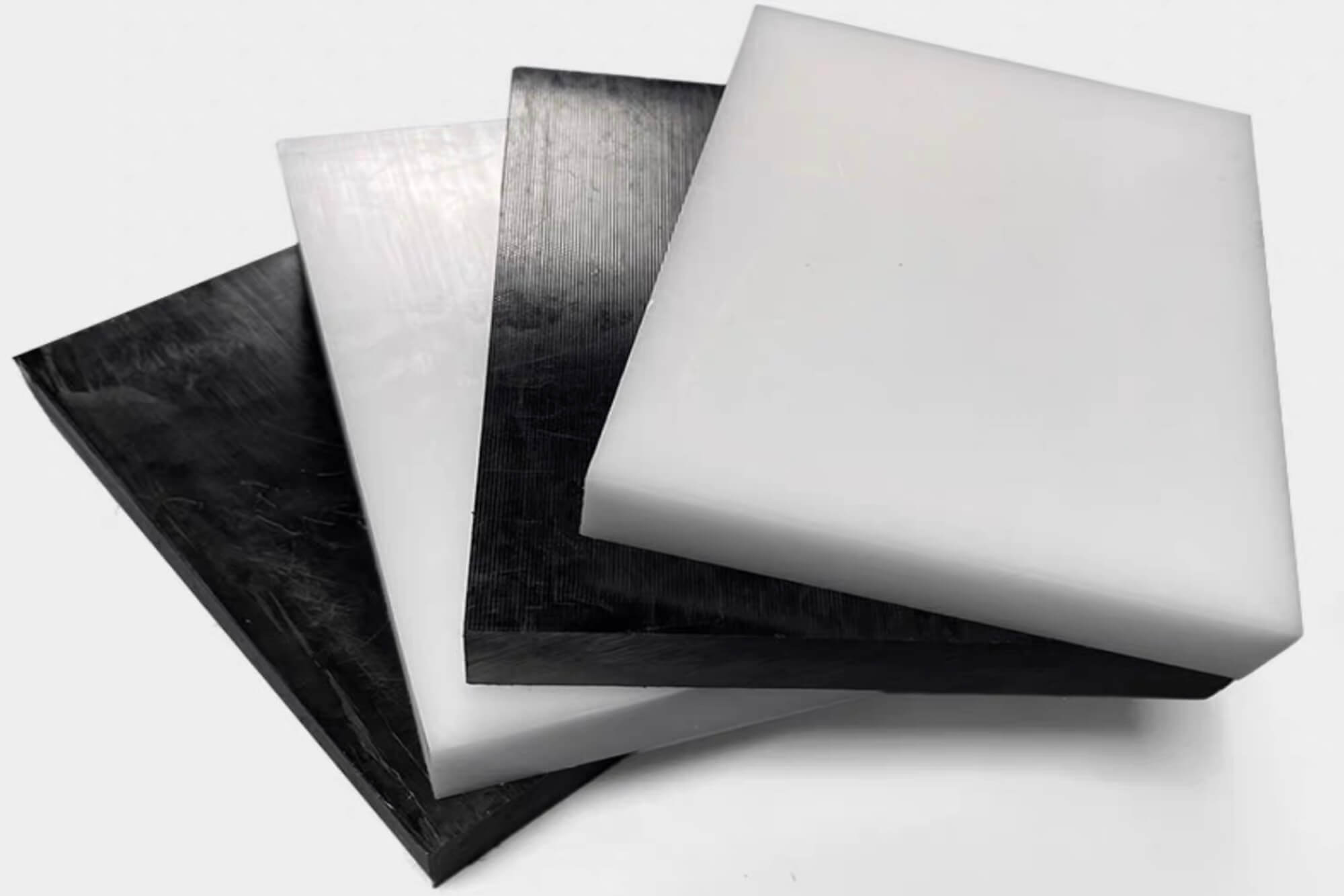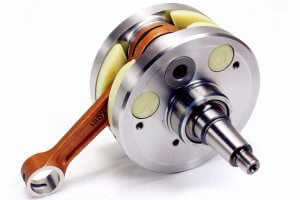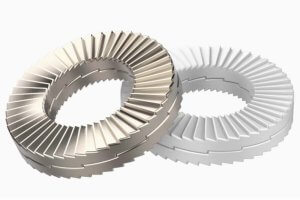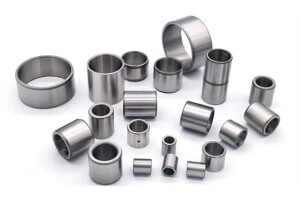Why “Hemiacetal vs Acetal” Matters in CNC Machining
In my years of experience in the field of materials science and CNC machining, I’ve had the opportunity to work with a wide variety of materials. Some of them are well-known, like steel and aluminum, while others are more specialized and require a deeper understanding of their chemical properties and machining characteristics. One such pair of materials is hemiacetal and acetal—terms that often come up in both chemistry and engineering discussions, but not always with clarity.
When I first encountered hemiacetal vs acetal, I’ll admit, I was confused by the similarity in their names and their relationship. Both are carbon-based compounds, both are related to aldehydes and alcohols, but how they behave in machining contexts is dramatically different. If you’ve ever worked with Acetal (POM), you know that it’s a go-to choice for high-precision CNC machining, widely used for making parts that require strength, durability, and wear resistance. In fact, for custom machining projects that demand exact specifications and high durability, Acetal often takes the lead. But, why do engineers and machinists even bother to distinguish between hemiacetal and acetal?
The simple answer lies in the stability of the materials, which significantly impacts their performance in machining environments. Acetal is the clear winner when it comes to practical applications in CNC machining, while hemiacetaltends to be more of a theoretical concept or an intermediate product in chemical reactions. In this article, I’ll dive into the chemistry, properties, and machining aspects of both to provide a better understanding of how hemiacetal and acetal differ and why Acetal is often the preferred material for machining.
Fundamental Chemistry: Hemiacetal vs Acetal
Let’s begin with the most basic aspect of these materials—their chemistry.
In chemistry, the terms “hemiacetal” and “acetal” refer to a class of compounds formed from aldehydes or ketones and alcohols. While they may sound similar, there are key differences that affect their stability and practical use.
What is a Hemiacetal?
A hemiacetal is a functional group that is formed when an aldehyde reacts with one molecule of an alcohol. The key feature of a hemiacetal is that it is unstable and can easily transform into other compounds. Hemiacetals are often intermediates in chemical reactions and are rarely used as standalone materials in industry. Typically, hemiacetals are involved in the formation of acetals, a more stable compound.
- Structure: A hemiacetal consists of a central carbon atom attached to both a hydroxyl group (-OH) and an alkoxy group (-OR) along with a hydrogen atom. The carbon atom is also connected to the aldehyde group.
- Stability: Hemiacetals are not very stable at room temperature and are highly prone to hydrolysis or conversion into acetals under certain conditions.
What is an Acetal?
An acetal, on the other hand, is a more stable compound that forms when an aldehyde reacts with two alcohol molecules. In an acetal, the central carbon is bonded to two alkoxy groups (R-O), which gives it greater stability than its hemiacetal precursor.
Acetal compounds are commonly used in engineering plastics, with Polyoxymethylene (POM) being one of the most popular forms, better known in the industry as Acetal. POM is a highly stable and durable material, which is why it is preferred in CNC machining.
- Structure: An acetal features two alkoxy groups (-OR) attached to a central carbon atom, replacing the original aldehyde group.
- Stability: Acetals are stable and do not easily undergo hydrolysis or transformation under standard conditions, making them highly suitable for industrial applications.
Key Difference
The stability of the acetal versus the instability of the hemiacetal makes a huge difference in their applicability in manufacturing and machining. Acetals, particularly POM, are widely used for machinable plastics and engineering components due to their strength, wear resistance, and dimensional stability.
Acetal (POM) in CNC Machining: Properties and Benefits
Now, let’s move from the chemistry to something much more practical: how Acetal (POM) is used in CNC machining. Over the years, I’ve worked extensively with Acetal (POM), and it’s a material I always keep in mind when selecting parts for high-precision manufacturing. It’s incredibly useful for CNC machining because it combines a variety of desirable properties that make it ideal for applications requiring high mechanical strength, low friction, and wear resistance.
Key Properties of Acetal (POM) for CNC Machining
Acetal’s success in CNC machining boils down to its material properties that make it not only easy to machine but also suitable for a wide range of demanding applications.
- Mechanical Strength: Acetal is known for its high tensile strength, which makes it ideal for creating parts that need to bear heavy loads.
- Low Friction: The material has self-lubricating properties, meaning it reduces the need for external lubrication in most applications.
- Wear Resistance: Acetal has exceptional wear resistance, which makes it perfect for creating components that move against other surfaces, such as bearings, gears, and bushings.
- Dimensional Stability: Unlike other plastics that can warp or degrade with changes in temperature or humidity, Acetal retains its shape and size even under varying environmental conditions.
- Ease of Machining: Acetal can be cut and shaped with standard CNC tools, which makes it one of the more straightforward materials to machine, especially when compared to more difficult materials like PEEK or PTFE.
Applications in CNC Machining
Given these properties, Acetal (POM) has a wide range of applications in CNC machining:
- Precision Gears: Its strength and low friction make it ideal for producing precision gears, especially for applications like automotive or industrial machinery.
- Bushings and Bearings: Acetal’s self-lubricating qualities make it perfect for components that must endure repetitive motion without significant wear.
- Medical Devices: Acetal is also used in the medical industry due to its biocompatibility, as it does not react with bodily fluids, making it suitable for surgical instruments and implants.
During a recent CNC machining project, I used Acetal (POM) to produce a series of custom gears. The material was not only easy to machine but also provided the precision and strength I needed to meet tight tolerances without any issues.
Challenges When Machining Acetal
Despite its numerous benefits, machining Acetal does come with its challenges. The material can melt or become gummy if you use the wrong cutting parameters. To get the best results, you need to make sure you’re using the correct cutting speeds and feed rates. For instance, you want to avoid excessive cutting speeds (typically between 500-800 SFM) to prevent overheating and deformation.
Why Hemiacetal is Rarely Used in CNC Machining
While Acetal (POM) is a fantastic choice for CNC machining, you might be wondering why hemiacetal doesn’t make an appearance in industrial applications. The primary reason lies in stability: Hemiacetal is not stable enough to withstand the demands of machining environments. Since it can easily revert to other compounds, it is not suitable as a standalone material.
Most machining environments demand materials that are stable, durable, and able to withstand heat and stress. Hemiacetal simply doesn’t meet these requirements. In practice, its use is limited to chemical processes where it serves as an intermediate material, rather than a finished product that can be machined into precision components.
Hemiacetal could theoretically be incorporated into advanced resins or composite materials, but Acetal (POM) is by far the more common and reliable option in CNC machining.
Common Applications of Acetal in CNC Machining
As mentioned earlier, Acetal (POM) is incredibly versatile and finds use in a wide range of industries due to its combination of strength, low friction, and wear resistance. When I first began machining Acetal, I was surprised at how easily it could be worked into components that require high precision. Over time, I’ve come to appreciate its many applications, especially in industries where both performance and durability are crucial.In fact, CNC machined parts made from Acetal are often the go-to solution for demanding applications like gears, bearings, and medical devices.
Precision Gears and Bearings
One of the most common applications of Acetal is in precision gears and bearings. In industries like automotive and industrial machinery, these components are constantly under stress and need materials that can withstand frequent wear without degrading. Acetal’s low friction properties make it perfect for gears that mesh with metal counterparts, while its dimensional stability ensures that the gears maintain accurate tolerances over time.
In my experience, working with Acetal gears has been highly rewarding. The material allows for high-precision CNC milling without the need for lubrication in most cases. This characteristic makes it an ideal choice for environments where external lubricants are not feasible, such as medical devices or cleanroom applications.
Medical Applications
Acetal is also widely used in the medical industry, particularly for devices that require high levels of biocompatibility and precision. Surgical instruments, diagnostic tools, and implantable devices all benefit from the strength and stability offered by Acetal (POM). Since Acetal is chemically inert, it doesn’t interact with bodily fluids, making it safe for medical applications.
For example, I’ve worked on medical prototypes that required the precision and durability only Acetal could offer. Its wear resistance ensures that parts such as pumps, valves, and connectors continue to function optimally, even after prolonged exposure to harsh environments.
Automotive and Aerospace Components
In automotive and aerospace industries, components need to endure extreme conditions, including high temperatures, exposure to chemicals, and mechanical stress. Acetal (POM) performs exceptionally well in this regard due to its thermal stability and resilience. Parts like fuel system components, under-the-hood parts, and brake componentsoften utilize Acetal to ensure both performance and longevity.
From personal experience in working on automotive prototype parts, I’ve seen how Acetal maintains its structural integrity even when subjected to high temperatures and friction. It is frequently used in fuel line fittings, seals, and other critical components.
Consumer Electronics
In consumer electronics, Acetal is used for high-precision components that need to fit together seamlessly without warping over time. Acetal parts are often found in smartphones, tablets, and home appliances, where dimensional accuracy and long-term durability are essential.
Best Practices for CNC Machining Acetal
When machining Acetal, there are certain best practices you should follow to ensure the material performs at its highest potential. From my experience, CNC machining Acetal (POM) isn’t particularly difficult, but there are a few key tips that will make the process smoother and produce better results.
1. Use the Right Cutting Tools
Acetal is relatively easy to machine, but the right tools are crucial for getting clean cuts and preventing any issues with melting. For CNC milling and turning, I recommend using high-speed steel (HSS) or carbide tools. These materials will hold up well under the stresses of machining and maintain their sharpness longer than standard tools.
When cutting Acetal, it’s essential to keep the cutting tool sharp and free from build-up. Regularly clean your tools to avoid any unwanted residue that could affect the material’s surface finish.
2. Optimize Cutting Speeds and Feeds
I’ve learned through trial and error that cutting speed and feed rate play a significant role in achieving the best finish and preventing damage to Acetal. Acetal (POM) has a relatively low melting point compared to other engineering plastics, so you need to ensure that your cutting speeds are not too high. In general, 500-800 SFM (Surface Feet per Minute) is a good range for milling, and you should adjust the feed rate to ensure smooth cutting without overheating.
If the tool begins to heat up too much, Acetal will soften, leading to poor cuts, so always monitor the cutting environment. I also recommend using air blast or coolant to keep the tool and material cool, reducing the chance of thermal damage.
3. Avoid Overheating
Because Acetal is prone to melting under high temperatures, tool overheating is one of the biggest issues when machining this material. Speed control is the key to avoiding this. Slower feed rates and cooler cutting conditions, such as using water-soluble coolants or air cooling, are crucial to getting clean, precise cuts without deforming the material.
4. Use Appropriate Tolerances
While Acetal is easy to machine, it’s essential to consider tolerances when machining. It holds tight tolerances well, but because of its low thermal expansion, Acetal may contract or expand slightly with temperature fluctuations. When designing parts, consider potential changes in ambient conditions or operating temperatures, especially for high-precision applications.
5. Finish the Surface
Acetal can be machined to a smooth finish, but sometimes additional finishing operations like polishing or bead blasting are needed, depending on the intended use. For example, in consumer electronics where aesthetics and function are both important, polishing the surface after machining can enhance the appearance and smoothness of the component.
Comparing Acetal to Other Engineering Plastics (PTFE, PEEK, Nylon)
As Acetal (POM) is often compared to other engineering plastics like PTFE, PEEK, and Nylon, it’s essential to understand the differences between these materials to select the best one for specific applications.
Acetal vs PTFE
PTFE (polytetrafluoroethylene), also known as Teflon, is known for its exceptional chemical resistance and low friction properties, but it’s more difficult to machine compared to Acetal. In CNC machining, Acetal is easier to work with, and it has higher mechanical strength than PTFE, making it better suited for applications like gears and bearing surfaces.
Acetal vs PEEK
PEEK (Polyetheretherketone) is a high-performance plastic that outperforms Acetal in extreme conditions, particularly with regard to high-temperature resistance and chemical stability. However, PEEK is more difficult and costly to machine, which makes Acetal a more practical choice for many standard machining applications. If you’re working in a high-temperature environment where PEEK is necessary, then it may be the better choice, but for most general-purpose uses, Acetal is often the go-to material.
Acetal vs Nylon
While both Acetal and Nylon are used in CNC machining, Acetal is generally more rigid, has better dimensional stability, and offers superior wear resistance. Nylon tends to absorb moisture, which can affect its strength and performance in varying environmental conditions. Acetal is better suited for applications requiring high precision and durability, while Nylon might be more cost-effective for less demanding applications.
Case Study: CNC Machining of Acetal in Real-World Projects
Over the years, I’ve had the opportunity to work on several real-world projects where Acetal (POM) was the key material. From automotive components to consumer electronics, I’ve seen firsthand how well Acetal performs in precision CNC machining.
One particularly memorable project involved producing a set of gears for a robotic arm used in automated manufacturing. The parts required a combination of high tensile strength and low friction, both of which are properties of Acetal (POM). The gears needed to mesh perfectly with metal components while maintaining durability over time.
Project Overview: Precision Gears for Robotics
- Client: A company specializing in automated manufacturing systems.
- Challenge: The gears had to withstand continuous rotational motion while maintaining precision in meshing with other parts. They also needed to be lightweight but highly durable.
- Solution: After selecting Acetal as the material, we used CNC milling and turning to produce the gears. We opted for a cooling system during machining to prevent overheating and used carbide tools for precise cutting.
The result was a set of gears that exceeded the client’s expectations. The dimensional accuracy was within microns, and the gears performed flawlessly in real-world tests. This case reinforced for me how critical Acetal is in precision machining applications.
Key Lessons Learned
- Precision is key: The gears had to fit within strict tolerance ranges. Acetal held up well, and we didn’t experience any issues with warping or dimensional changes.
- Cutting speed and feeds matter: We had to dial in the right cutting parameters to avoid heat buildup and to ensure that the cuts were clean. Excessive heat could have led to deformation, which would have been disastrous for the gears’ performance.
This project is a perfect example of how Acetal’s mechanical properties can shine in CNC machining, where precision and durability are crucial.
Environmental and Sustainability Considerations for Acetal
As a material, Acetal (POM) is incredibly popular, but like many plastics, it raises concerns when it comes to sustainability. One of the major challenges that we, as engineers and machinists, face is balancing performance with environmental impact.
Recycling and Disposal of Acetal
Unlike some plastics, Acetal can be recycled, but it’s important to note that the recycling process is not as straightforward as more common materials like PET. However, Acetal can be reprocessed and reused in specific applications. Many manufacturers are already starting to adopt more sustainable practices, such as incorporating recycled Acetal into non-critical parts or blending it with other materials for use in less demanding applications.
Environmental Impact
Although Acetal is durable and long-lasting, it is still a plastic and contributes to plastic waste if not disposed of properly. Some companies are starting to take steps towards developing bio-based alternatives to Acetal or incorporating more sustainable production methods to reduce the environmental footprint.
My Experience
In some of the medical device manufacturing projects I’ve been involved in, there’s been a noticeable push towards more sustainable manufacturing practices. This includes using biodegradable plastics or ensuring that waste materials like Acetal are disposed of or recycled properly. While Acetal still has its place in the manufacturing world, I’ve seen firsthand how a growing focus on sustainability is driving change in material selection.
Future of Acetal in CNC Machining and Engineering Applications
Looking ahead, it’s clear that Acetal (POM) will continue to play a significant role in CNC machining and engineering applications. As industries evolve and become more demanding in terms of material properties, Acetalwill need to adapt and improve.
Innovation in Acetal-based Materials
Research into new formulations of Acetal is ongoing. For instance, there are efforts to create composite materials that combine Acetal with other additives or fibers to enhance its mechanical properties even further. These Acetal composites could improve strength, thermal stability, and chemical resistance, making it suitable for even more challenging applications in aerospace, automotive, and medical industries.
3D Printing with Acetal
Another area where Acetal could see growth is in additive manufacturing or 3D printing. Although POM is already used in FDM (Fused Deposition Modeling) 3D printers, the full potential of 3D printing with Acetal hasn’t been fully realized. As 3D printing technology evolves, we could see Acetal being used for more complex, customized parts in industries like aerospace, medical devices, and electronics.
Impact of Sustainable Practices
The future of Acetal (POM) will also depend on its ability to keep up with sustainability trends. Engineers are increasingly focused on making materials that are not only high-performing but also environmentally friendly. This means that Acetal may need to evolve into a more sustainable material, possibly incorporating bio-based alternatives or improving its recycling process.
FAQ
- What is the main difference between Hemiacetal and Acetal?
- The primary difference lies in their chemical structure. A hemiacetal is a compound formed when an alcohol group reacts with an aldehyde, containing one ether group (-O-) and one hydroxyl group (-OH) attached to the same carbon. On the other hand, an acetal involves the replacement of the hydroxyl group with another ether group (-O-). In essence, acetal is the more stable and fully reacted version compared to hemiacetal.
- Is Acetal the same as Delrin?
- Delrin is a brand name for a specific type of Acetal (POM) produced by DuPont. While both Acetal and Delrin refer to the same material, Delrin often comes with more consistency in properties due to the controlled manufacturing process. It’s a highly precise version of Acetal, typically used in high-performance applications where exact specifications are crucial.
- What industries benefit the most from Acetal?
- Acetal (POM) is widely used in industries such as automotive, aerospace, consumer electronics, medical devices, and industrial machinery. Its high strength, dimensional stability, and resistance to wear make it ideal for precision components, such as gears, bearings, and bushings.
- How does Acetal compare to Delrin in CNC machining?
- Both Acetal and Delrin offer excellent machinability, but Delrin is often preferred for high-precision CNC machining due to its consistent material properties and availability in custom formulations. Acetal, while still machinable, may vary slightly in performance depending on the supplier and formulation.
- Is Acetal safe for food-contact applications?
- Yes, Acetal (POM) is FDA-approved for certain food-contact applications, such as in conveyor beltsand food processing components. However, it’s important to verify that the specific formulation you’re using complies with relevant food safety regulations for your region.
- Can Acetal be used in outdoor applications?
- While Acetal has good dimensional stability and resistance to wear, it’s not particularly resistant to UV radiation and weathering. For outdoor use, additional UV stabilization or a protective coating may be needed to prevent degradation. In highly exposed applications, you might consider Polycarbonate or PEEK instead.
- Can Acetal be recycled?
- Yes, Acetal can be recycled, but the process is not as widespread or as simple as with materials like PET. Many manufacturers are now exploring ways to incorporate recycled Acetal in their production processes, especially for non-critical parts. Recycling and reprocessing can be more challenging when it comes to high-performance components, but it is certainly possible.
- How does Acetal perform in electrical applications?
- Acetal (POM) has excellent electrical insulating properties, making it suitable for some electrical and electronic components, such as connectors and insulators. However, it should not be used in applications involving high voltages or extreme environmental conditions unless the material is specifically engineered for those purposes.
- How do I prevent warping when machining Acetal?
- To prevent warping, it’s important to control cutting temperature and stress distribution during machining. Using coolants or air blasts to reduce heat buildup, as well as ensuring even clamping of the material, will help reduce the risk of distortion. Avoiding excessive cutting speeds and feed rates is also crucial.
- What is the recommended cutting speed for Acetal in CNC machining?
- The cutting speed for Acetal typically ranges between 300-400 surface feet per minute (SFM) when using carbide tools. However, the exact speed can vary based on the specific type of Acetal and the application. Feeds should be kept moderate to prevent excessive heat buildup, which can cause the material to soften or deform.
- How is Acetal processed in the machining shop?
- Acetal is processed using standard CNC milling, turning, and drilling techniques. Since it has good machinability, carbide or HSS tools work well for machining this material. However, it’s important to avoid overheating, as Acetal has a relatively low melting point compared to metals. Cooling systems like air blasts or coolants are often used during the machining process to reduce heat buildup.
- What are the main applications of Acetal?
- Acetal (POM) is commonly used for gears, bearings, bushings, wear plates, and electrical insulators in industries ranging from automotive to medical devices. It is also used in food processing equipment and electronic components due to its excellent dimensional stability and low friction properties.
- Is Acetal resistant to chemicals?
- Acetal (POM) offers excellent resistance to a wide range of chemicals, including alcohols, alkalies, and some acids. However, it can be affected by strong oxidizing agents and should not be exposed to chlorineor nitric acid. Always check compatibility with specific chemicals before selecting Acetal for chemical-resistant applications.
- Can Acetal be used in medical devices that come into contact with the human body?
- Acetal is biocompatible and has FDA approval for some medical applications, particularly for components that don’t remain in the body long-term (such as surgical instruments and medical connectors). For implantable devices, materials like PEEK are often preferred due to their superior long-term biocompatibility.
- What is the best way to machine Acetal for high-precision parts?
- For high-precision machining of Acetal, it’s essential to use sharp carbide tools and maintain consistent cutting parameters (speeds and feeds) to avoid creating excess heat. Using coolants or air jets helps dissipate heat during machining, improving both surface finish and dimensional accuracy. It’s also important to ensure that the material is securely clamped and free of stress prior to machining.
Other Articles You Might Enjoy
- Acetal Material Overview: Why It Excels in CNC Machining Applications
I. Introduction I’ve been fascinated by engineering plastics for quite some time. In my early days as a mechanical enthusiast, I spent hours experimenting with different polymers to see how…
- How CNC Machining Delivers Precision in Custom POM Plastic Parts
Working with POM plastic in CNC machining has become a popular choice for manufacturers due to its excellent mechanical properties, low friction, and high dimensional stability. Customizing parts using this…
- Delrin in CNC Machining: The Ultimate Guide for Engineers
Introduction to Delrin and Its Role in CNC Machining Delrin, a high-performance engineering plastic, has become a cornerstone material for industries relying on precision machining. This polyoxymethylene homopolymer (POM-H) is…
- Why Delrin Is the Ideal Material for CNC Machined Parts
Working with CNC machining over the years has revealed the importance of choosing the right material for precision parts. Delrin, a type of acetal homopolymer, quickly became a favorite for…
- 10 plastic materials frequently used in CNC machining
Introduction to CNC Machining and Plastics CNC machining stands for Computer Numerical Control machining, a manufacturing process where pre-programmed computer software dictates the movement of factory tools and machinery. This…
- Custom Precision CNC Machining in Brass for Medical Devices
Custom Precision CNC Machining in Brass for Medical Devices Computer Numerical Control (CNC) machining is a manufacturing process that utilizes computerized controls to operate and manipulate machine and cutting tools…
- Precision CNC Machining for High-Performance Industrial Machinery
Precision CNC Machining for High-Performance Industrial Machinery The process of Precision CNC (Computer Numerical Control) machining is at the core of manufacturing high-performance industrial machinery. This technique leverages a computer's…










 Afrikaans
Afrikaans Albanian
Albanian Amharic
Amharic Arabic
Arabic Armenian
Armenian Azerbaijani
Azerbaijani Basque
Basque Belarusian
Belarusian Bengali
Bengali Bosnian
Bosnian Bulgarian
Bulgarian Catalan
Catalan Cebuano
Cebuano Chichewa
Chichewa Chinese (Simplified)
Chinese (Simplified) Chinese (Traditional)
Chinese (Traditional) Corsican
Corsican Croatian
Croatian Czech
Czech Danish
Danish Dutch
Dutch English
English Esperanto
Esperanto Estonian
Estonian Filipino
Filipino Finnish
Finnish French
French Frisian
Frisian Galician
Galician Georgian
Georgian German
German Greek
Greek Gujarati
Gujarati Haitian Creole
Haitian Creole Hausa
Hausa Hawaiian
Hawaiian Hebrew
Hebrew Hindi
Hindi Hmong
Hmong Hungarian
Hungarian Icelandic
Icelandic Igbo
Igbo Indonesian
Indonesian Irish
Irish Italian
Italian Japanese
Japanese Javanese
Javanese Kannada
Kannada Kazakh
Kazakh Khmer
Khmer Korean
Korean Kurdish (Kurmanji)
Kurdish (Kurmanji) Kyrgyz
Kyrgyz Lao
Lao Latin
Latin Latvian
Latvian Lithuanian
Lithuanian Luxembourgish
Luxembourgish Macedonian
Macedonian Malagasy
Malagasy Malay
Malay Malayalam
Malayalam Maltese
Maltese Maori
Maori Marathi
Marathi Mongolian
Mongolian Myanmar (Burmese)
Myanmar (Burmese) Nepali
Nepali Norwegian
Norwegian Pashto
Pashto Persian
Persian Polish
Polish Portuguese
Portuguese Punjabi
Punjabi Romanian
Romanian Russian
Russian Samoan
Samoan Scottish Gaelic
Scottish Gaelic Serbian
Serbian Sesotho
Sesotho Shona
Shona Sindhi
Sindhi Sinhala
Sinhala Slovak
Slovak Slovenian
Slovenian Somali
Somali Spanish
Spanish Sundanese
Sundanese Swahili
Swahili Swedish
Swedish Tajik
Tajik Tamil
Tamil Telugu
Telugu Thai
Thai Turkish
Turkish Ukrainian
Ukrainian Urdu
Urdu Uzbek
Uzbek Vietnamese
Vietnamese Welsh
Welsh Xhosa
Xhosa Yiddish
Yiddish Yoruba
Yoruba Zulu
Zulu